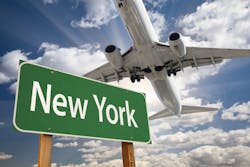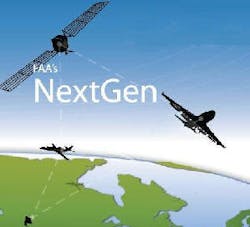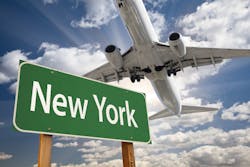NASA selects Saab to study streamlined air traffic, optimized 4D flight across operations
STOCKHOLM, Sweden, 26 June 2014. Defense and security company Saab entered into a cooperative agreement with National Aeronautics and Space Administration (NASA) Aeronautics Research Institute (NARI) to prototype and test a new tool for optimizing air traffic across multiple phases of operations, including the airport surface and terminal airspace, with more efficient 4D trajectory solutions. The research project will enable the aviation industry to more precisely develop future solutions for the Next Generation Air Transportation System (NextGen).
Saab, along with its partner NextGen Aerosciences (NGA), will apply two separate techniques--NGA’s Continuous Re-planning Engine and Probabilistic Graphical Models--to address optimal 4D (three spatial dimensions plus time) flight across multiple operational phases. In addition, the research will examine how rapidly changing situations will impact operations and how to more effectively address uncertainty in future operations.ne
The study will focus on managing traffic in the highly congested and complex New York airspace and on the surface at four busy airports in the New York City (NYC) area that form a metroplex, a group of proximal airports whose arrival and departure operations are highly interdependent. Currently, controllers at the airports and in the New York TRACON implement a wide variety of traffic management strategies to manage the airspace and surface traffic interactions. These strategies, which include miles-in-trail restrictions, surface holds for TRACON approval, and indirect routings, contribute to delays and additional fuel consumption. The proposed research aims to alleviate such adverse effects of the metroplex interactions on air traffic.
“In many cases, researchers are developing and testing complex efficiency solutions that focus on one phase of flight, such as the surface, without being able to accurately see the impact on multiple phases in real time,” says Ken Kaminski, general manager of Saab ATM. “We are taking a new approach by integrating two different techniques to determine their ability to paint a more accurate, holistic picture of the effect of new operational procedures on the entire flight path.”
Saab develops solutions and systems that enable the aviation community to operate more safely and efficiently both today and into the future. This includes creating and implementing decision support tools for enhancing airport surface safety and improving National Airspace System (NAS) efficiency through departure metering and en-route traffic flow management.
New York aircraft image courtesy Shutterstock.


